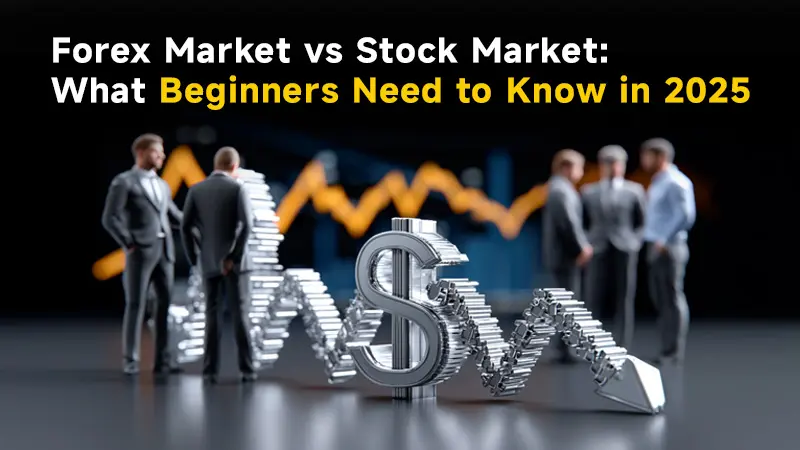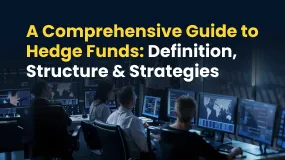简体中文
繁體中文
English
Pусский
日本語
ภาษาไทย
Tiếng Việt
Bahasa Indonesia
Español
हिन्दी
Filippiiniläinen
Français
Deutsch
Português
Türkçe
한국어
العربية
Before You Trade the Next Big Thing, Remember the Dot-Com Collapse
Abstract:What if everything you’re investing in now echoes the deadly mistakes of the dot-com era? Learn why traders who ignore history are setting themselves up for catastrophic losses.

The dot-com bubble of the late 1990s and early 2000s remains one of the most vivid financial manias in modern history. It was a time of euphoria, speculation, and unchecked optimism surrounding internet-based businesses. But as quickly as it inflated, the bubble burst, leaving behind a trail of bankruptcies, disillusioned investors, and invaluable lessons for traders and investors today.
The dot-com era was driven by the explosive growth of the internet and the belief that traditional business models were obsolete. Start-ups with little more than a website and a “.com” in their name attracted millions in venture capital. By 1999, the Nasdaq Composite Index, dominated by technology stocks, had more than doubled. Companies such as Pets.com and Webvan reached billion-dollar valuations without turning a profit.
This speculative frenzy was fuelled by a fear of missing out (FOMO) and a widespread belief that the internet would fundamentally and immediately change the global economy. While the internet indeed revolutionised business, the timeline and costs were grossly misunderstood.

By March 2000, the party was over. The Nasdaq peaked at over 5,000 points before plummeting nearly 80% over the next two years. Between 2000 and 2002, investors lost an estimated $5 trillion in market value. Notably, high-flying stocks such as Cisco, Intel, and Amazon saw their valuations collapse (for example, Amazons share price dropped from $107 to just $6 by 2001), although it would eventually recover and thrive.
Key Lessons for Modern Traders and Investors:
- Valuations Matter: One of the most glaring errors during the dot-com boom was the disregard for traditional valuation metrics. Many traders invested in companies without revenue, let alone profits. Valuations based on hope rather than fundamentals are rarely sustainable.
- Beware of Hype Cycles: Like all bubbles, the dot-com craze was propelled by hype. Media coverage and herd mentality encouraged irrational exuberance. Traders should be wary of narratives that promise exponential returns without solid backing.
- Diversification Is Critical: Investors who had overexposed themselves to tech stocks suffered catastrophic losses. A diversified portfolio can protect against sector-specific downturns and market shocks.
- Time in the Market Beats Timing the Market: While many tried to “ride the wave,” most were caught when the tide turned. Long-term investors who maintained discipline and avoided speculation often fared better than short-term traders chasing trends.
- Innovation Alone Isnt Enough: Even transformative technologies take time to mature. Traders must differentiate between groundbreaking ideas and viable, investable businesses.
Two decades on, the echoes of the dot-com bubble can be heard in the rise of cryptocurrencies, meme stocks, and AI-driven ventures. While markets evolve, human behaviour often does not. For traders and investors alike, the lessons from the early 2000s are as relevant as ever.
In the fast-paced world of online trading, remembering the past is often the best way to protect the future.

#MarketAnalysis #MarketInsights #GlobalMarket
Disclaimer:
The views in this article only represent the author's personal views, and do not constitute investment advice on this platform. This platform does not guarantee the accuracy, completeness and timeliness of the information in the article, and will not be liable for any loss caused by the use of or reliance on the information in the article.
Read more

Forex Market vs Stock Market: What Beginners Need to Know in 2025
The forex market is where currencies are traded. It’s the largest and most liquid market in the world, with more than $7.5 trillion traded daily. The stock market is where investors buy and sell shares of publicly listed companies like Apple, Tesla, or Google.

100% Tariff Incoming: Trump Announces November Hike on China
The U.S. will impose an additional 100% tariff on Chinese imports starting Nov. 1, 2025—potentially earlier—alongside new export controls on “critical software,” escalating tensions after Beijing’s rare-earth curbs, new port fees, a Qualcomm probe, and a halt to U.S. soybean purchases. Stocks fell on the news. Key context: some U.S.-China tariffs remain paused until Nov. 10, a Supreme Court case could reshape Trump’s tariff authority, new U.S. duties on cabinets (Oct. 1) and wood products (Oct. 14) are in force, and a pause on Mexico tariffs is set to end next month.

A Comprehensive Guide to Hedge Funds: Definition, Structure & Strategies
Did you stumble upon the term ‘Hedge Funds’ in pursuit of wealth creation? Want to know more details about them, such as their definition, benefits, structure, strategies, etc? We’ve got you! Firstly, let us define hedge funds as private investment funds that collect money from institutional investors or wealthy individuals with the goal of achieving greater returns. To outperform the broader market, these funds incorporate strategies such as derivatives, leverage and short selling. Read on to know more about how these funds work.

Tokenized Stocks: Innovation or Just Another Wrapper?
While tokenized stocks promise global, round-the-clock trading, many platforms only offer synthetic exposure similar to CFDs. Without shareholder rights or deep liquidity, their added value remains in question.
WikiFX Broker
Latest News
Is Nash Markets Regulated or Risk? Truth About Nash Markets’ License & Withdrawal Issues
Webull Widens Crypto Futures with Coinbase Derivatives
Latest FCA Daily Alerts and Consumer Warnings for 2025
CySEC Blocks Certification Access to Combat Advisor Impersonation
Angel one 2025 Review & Complaints
Exclusive Markets Under the Scanner: Traders Report High Swap Charges, Deposit Discrepancies & More
Voices of the Golden Insight Award Jury - Simon So, Chief Experience Officer of Hantec Financial
PINAKINE Broker Review: A Complete Look at Its Services and Risks
Pinched By Penny Shortage, US Retailers Beg Congress To Step In
PINAKINE Broker India Review 2025: A Complete Guide to Safety and Services
Currency Calculator




